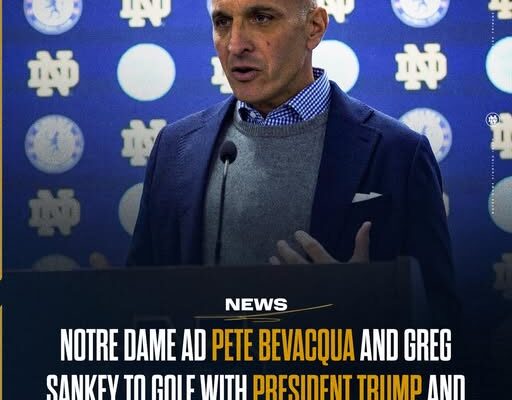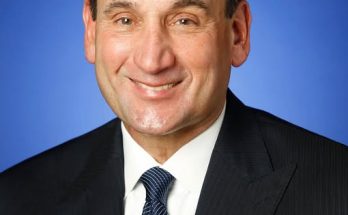In a world where the future of college athletics is being re-written seemingly every day, a power huddle on the links has captured the attention of the sports world. In an unexpected, yet widely reported, development, SEC Commissioner Greg Sankey and Notre Dame Athletic Director Pete Bevacqua have met with President Donald Trump on a golf course at his Bedminster, New Jersey, club.1 This high-profile gathering, which occurred just recently, in early June 2025, underscores the increasingly complex and influential role that external figures, including political leaders, are playing in shaping the landscape of college sports.2
The meeting, first reported by Yahoo Sports’ Ross Dellenger and later confirmed by Sankey himself, signifies a unique convergence of power and influence.3 Greg Sankey is arguably the most powerful figure in college athletics today, presiding over the Southeastern Conference, a dominant force that has reshaped the national championship picture and is on the cusp of further expansion with the addition of Texas and Oklahoma.4 Pete Bevacqua, a former NBC Sports chairman and CEO of the PGA of America, brings a wealth of media and business acumen to his role as Notre Dame’s Athletic Director.5 His institution, with its unique independent status in football and its massive media rights deal with NBC, holds an unparalleled position of influence in the sport.6 And then there’s Donald Trump, a former President with a well-documented interest in sports, particularly golf and major events, and a history of engaging with high-profile figures.7
This meeting didn’t occur in a vacuum. It took place at a pivotal moment for college athletics, one marked by unprecedented legal challenges, seismic shifts in player compensation, and an uncertain future regarding governance.
- The House v. NCAA Settlement: Just prior to this meeting, the landmark House v. NCAA settlement was officially finalized. This near $3 billion agreement fundamentally alters the financial model of college sports, paving the way for direct revenue-sharing payments to student-athletes for the first time in history. It also raises critical questions about Title IX compliance, the future of non-revenue sports, and the overall economic sustainability of athletic departments.
- NIL and the Transfer Portal: The ongoing chaos of Name, Image, and Likeness (NIL) collectives and the unbridled transfer portal have created a wild-west environment. Without clear federal guidelines or consistent regulation, schools, conferences, and athletes are navigating an increasingly complex and often opaque system. This has led to concerns about competitive balance, player exploitation, and the long-term health of collegiate sports.
- Congressional and White House Involvement: The NCAA and various conference commissioners have been actively seeking federal intervention, pleading for a unified, comprehensive legislative framework to stabilize college athletics.8 They are pushing for antitrust exemptions, a federal standard for NIL, and clear guidelines for player employment status.9 This desire for federal action is precisely why figures like Sankey and Bevacqua would be seeking an audience with a former President who still commands significant political sway.
- Trump’s Prior Interest: Donald Trump has previously expressed interest in the issues plaguing college sports.10 He reportedly explored issuing an executive order and even created a commission, attempting to tap former Alabama head coach Nick Saban to lead the charge, though that commission’s work was later paused. His engagement signals a belief that the challenges facing college athletics are significant enough to warrant high-level attention.
While the casual setting of a golf course might suggest a relaxed conversation, the stakes were undoubtedly high. The meeting likely served multiple purposes:
- Seeking Federal Action and Advocacy: The primary objective for Sankey and Bevacqua was almost certainly to lobby for federal legislative solutions. They would have aimed to impress upon Trump the urgency and complexity of the issues, hoping he would use his influence to expedite congressional negotiations or even consider further executive action if he were to return to office. A unified federal standard, rather than a patchwork of state laws, is a top priority for athletic leaders.
- Gaining Perspective and Understanding: Sankey explicitly stated, “What was helpful for me is – and for Pete [Bevacqua] as well – to hear his thoughts and his perspectives, to share some of ours.”1112 Trump, with his background in business and entertainment, and his keen understanding of public perception, might offer unique insights into how to navigate the current landscape. Hearing directly from high-level sports administrators would also provide him with a comprehensive overview of the challenges.
- Building Relationships and Alliances: In the fluid world of college sports, building relationships across various sectors is crucial. Establishing a direct line of communication with influential political figures, regardless of their current office, can prove beneficial in future policy discussions or crisis management.
- Discussing Revenue Sharing and Athlete Compensation: With the House settlement recently finalized, the implications of directly paying student-athletes would have been a significant talking point. This includes the massive financial outlay required ($20 million per school per year), how it will be distributed, and its potential impact on non-revenue sports and Title IX.
- Addressing Future Governance Models: The current NCAA structure is under immense strain. Discussions might have touched upon potential alternative governance models for college sports, or how federal legislation could streamline or even replace certain NCAA functions.
- The “Notre Dame Factor”: Bevacqua’s presence is particularly noteworthy. Notre Dame, as an independent, has always navigated its own path. Its future football alignment, whether remaining independent or potentially joining a super-conference (like the SEC), is a perpetual topic of discussion. While unlikely to be directly on the agenda for a presidential meeting, the conversation between Sankey and Bevacqua, amplified by Trump’s presence, could subtly hint at the broader power dynamics and future alignments of the sport.
Sankey remained “mum on the subject” of the specific discussions, stating, “I think those are best left for the moment on the golf course.” This discretion is typical for high-stakes, informal meetings of this nature. It allows for frank and open dialogue without immediate public scrutiny or misinterpretation. However, the very fact that the meeting occurred, and was reported, sends a powerful signal about the gravity of the issues facing college athletics and the lengths to which its leaders are going to find solutions.
It’s difficult to predict the immediate, tangible outcomes of this “power huddle on the links.” Personal discussions on a golf course may not directly translate into policy overnight. However, the symbolism is potent:
- It elevates the discussion about college sports’ future to the highest levels of political influence.
- It demonstrates the urgency felt by top athletic administrators to secure federal help.
- It reinforces the idea that the college sports landscape is no longer just an athletic endeavor but a significant economic and political enterprise.
Whether this meeting ultimately leads to concrete legislative action, renewed political commission efforts, or simply a deeper understanding among key stakeholders remains to be seen. But for Greg Sankey and Pete Bevacqua, the opportunity to bend the ear of a former President on matters of existential importance for college athletics was a strategic play in a game where the rules are constantly being re-written. The golf course, typically a venue for leisure, transformed into a crucial arena for the future of a multi-billion dollar industry.



